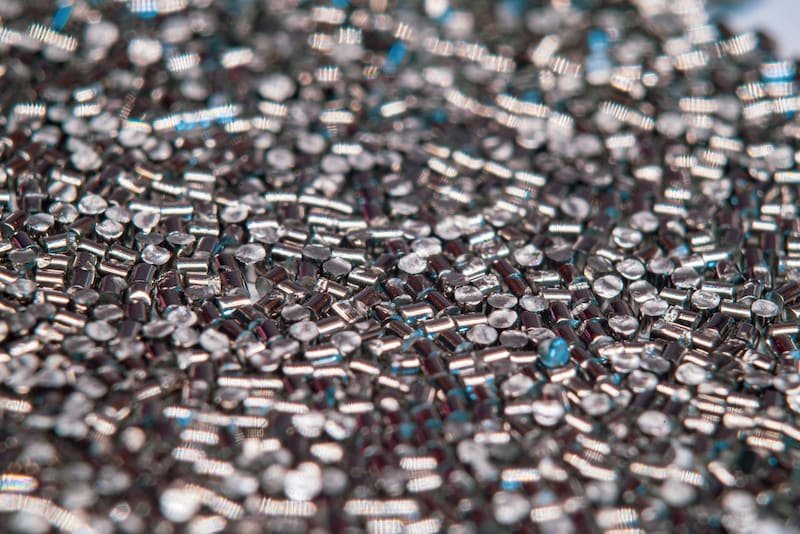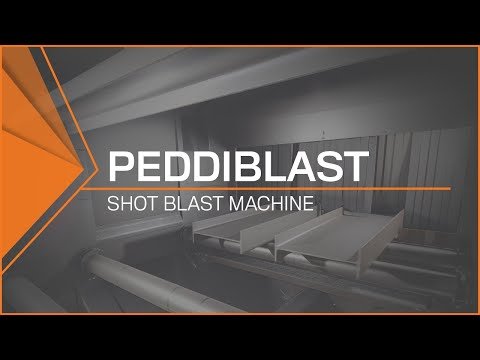Shot blasting is one of the most effective surface preparation methods wherein irregularities on the metal’s surface are removed through abrasion. This process is different from sandblasting as shot blasting uses a centrifugal wheel, while sandblasting uses compressed air to deliver its media.
- Shot blasting employs wheel blast equipment to propel abrasive materials like steel shot and grit onto surfaces for finishing. The process uses centrifugal force, unlike sandblasting which relies on compressed air.
- Shot blasting is generally more aggressive and efficient than sandblasting. Its higher intensity makes it more suitable for treating tougher materials or removing thicker coatings
- Shot blasting is predominantly used in industrial settings. It’s essential for preparing metal surfaces for welding and finishing processes like painting or coating.
What Is Shot Blasting?
Shot blasting or grit blasting is one of the abrasive blasting processes that refine metal surfaces through rapidly moving particles. Spherical shot media is propelled onto the metal’s surface, cleaning and polishing the target area using centrifugal force.
The shot-blasting process is an effective method for giving these metals smooth and clean surfaces. Debris and undesirable imperfections on the surface may cause problems further down the line in subsequent manufacturing processes. This can be fixed beforehand through shot blasting.
Shot blasting is an effective method for preparing surfaces, but it has a few downsides if not performed correctly. Possible dangers include damage to the equipment, to the workpiece and its surface, as well as generating dust which creates a mess. Some industries prefer shot blasting over other abrasive surface preparation methods since this process yields high-quality results while being less expensive and safer.
Shot peening works similarly to shot blasting but the former strengthens the material through compressive force from the shot media.
Key Applications
The versatility of shot blasting allows it to have a wide range of applications across different sectors. Some of the surface preparation methods include:
- Deburring – Burrs and other imperfections are removed with concentrated abrasive media, resulting in a more polished and smoother surface.
- Rust removal – The high velocity of the shot blasting media generates enough force to remove rust from the material’s surface.
- Scaling – Shot blasting improves the durability of the workpiece by eliminating mill scale or oxidised flaky material on the surface. Shot media can penetrate hard-to-reach areas and remove mill scale.
- General cleaning – Oils and grease as well as accumulated debris on the surface are removed with this process. Cleaning surfaces before the next step in the production process reduce the risk of damage over time.
- Coatings – An even and clean metal surface results in better paint and coatings adhesion.
- Personal account manager
- Quality assurance
- Payment terms for companies
- On-time delivery by Fractory
Get a quote
Some industries that utilise shot blasting in some of their processes are:
- Automotive – Body panels or engine parts that come through production are cleaned and the surfaces are smoothened through the shot blasting process.
- Welding – Surface preparation through high-velocity shot blasting helps to achieve optimal surface quality, helping to avoid welding defects from debris and other imperfections.
- Aerospace – Shot blasting at pinpointed areas while working on tight tolerances applies to aerospace components that have strict surface requirements. Some applications include cleaning compressor blades and deburring turbine blades after laser drilling the workpiece.
Materials
Shot blasting is typically employed on metals, such as mild steel, cast iron, titanium, copper and engineering steel to name a few, but also on concrete and advanced technical ceramics, such as silicon carbide, alumina, and boron carbide.
Shot blasting everyday ceramics like pottery or porcelain should definitely be avoided due to their lower strength and higher fragility. Also, soft metals like aluminum or soft copper can deform or get damaged due to the high impact force of shot blasting. This also applies to thin sheets of metal as they’ll easily warp or distort.
How Does the Shot Blasting Process Work?
Conveyor-Type Shot Blast Machine
The shot blasting process works by subjecting the surface of a workpiece to a barrage of shot media at high velocity. The shot material is propelled by a centrifugal wheel in which each individual shot generates enough force to act as an abrasive.
It can clean the surface, remove debris, remove imperfections, and improve the adhesion quality for paints and coatings. Shot blasting is performed inside blast cabinets where the equipment and workpiece are isolated from the environment.
This operation is an economical method for preparing the workpiece before it is processed as a finished product. It would be wise to keep an eye out for issues such as dust collection or excessive shot blasting.
Shot Media Recovery
Modern shot blasting equipment recycles the shot media through a vacuum which collects the used particles. Separators remove broken abrasive media and feeders replace these shots for operation.
Shot Blasting Media

The type of abrasive material propelled by a spinning wheel onto the metal surface in a blast cabinet can vary. Some of the common abrasive media are:
- Aluminium oxide – An aggressive media that is non-corrosive and versatile, mainly used for hard surfaces requiring fine polishing. Aluminium oxide shots are low-cost and reusable. They break down into smaller particles from usage and are thus categorised as angular shot media.
- Steel shots – Small steel balls that leave a high polish and shine to the workpiece. Each steel shot is uniform in size which allows equal distribution of impact to the surface.
- Glass beads – A gentle abrasive suitable for soft metals that allow to avoid contamination of the surface.
- Cut wire shots – These are obtained with a cutting wire that is divided into equal lengths relative to its wire diameter. They are inexpensive, have high strength, and are highly abrasive.
- Ceramics – Beads that generate less dust than other media and apply a smaller amount of force.
Shot blasting media used for specific applications are synthetic materials such as sodium bicarbonate and agricultural materials such as crushed kernels. Other shot media include black beauty (coal slag), staurolite, walnut shells, and corn cobs.
Shot Media Properties
Blast media has four main properties that significantly influence the surface finish of the metal.
- Shape – Most shot blasting media comes in the form of a round shape which is used for almost any application. Angular shot blasting media are more abrasive which is ideal for aggressive cleaning applications. The surface of the workpiece becomes “etched” which gives better adhesion to coatings, paint, epoxy, and rubber.
- Size – Smaller media sizes or “mesh” are suitable for polishing and achieving clean surfaces. A larger mesh is used for aggressive applications, such as profiling or etching the workpiece in preparation for coating or welding.
- Hardness – Harder shot media allows for better material penetration compared to softer media. Ideally, suitable blasting media hardness should be selected for the workpiece to avoid damaging the material.
- Density – Higher-density shot media applies more force to the workpiece when propelled at a fixed velocity.


